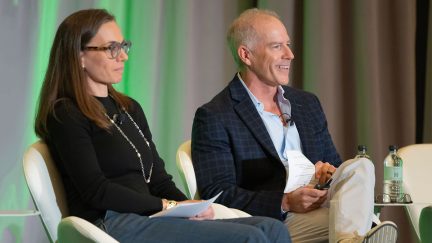For more stories like this, sign up for the PLANADVISERdash daily newsletter.
Helping Participants See Stages of Retirement
First, says Jan Holman, director of adviser education at Thornburg Investment Management, plan advisers should advise their plan sponsor clients that no retirement discussion is complete without pulling in longevity.
“Retirement, retirement, retirement,” Holman says. “We’ve focused on that nonstop, but now it’s more like graduating from high school or college. Retirement is an event, but it’s not the whole thing.”
The industry needs to look at retirement more holistically, Holman tells PLANADVISER. As people live longer—and some will even live into their 90s and older—their approach to life as well as to portfolio allocations will likely change. “These are the things they need to help their employees become aware of,” she says. “It’s a different way of life, and a different way of looking at things. Your life isn’t going to end at age 67.”
These longer lifespans will mean factoring health considerations, which may change the amount people put away for retirement to meet health care costs. Some people may want to consider long-term care policies, since a critical health event could wipe out the majority of retirement funding.
Portfolio structure is a key part, Holman says, and withdrawal strategies are crucial. “Accumulation is easy, compared with withdrawal strategies,” she says. A portfolio needed to last for a long life must have sufficient liquidity to produce dollars for distribution. High-quality investments are needed to produce income and have an opportunity to increase that income over time. “Bond investments provide stability, but you get what you get,” Holman observes.
Perhaps even better than bonds are high-quality, dividend-paying stocks. Global dividend portfolios may also be desirable for their ability to pay higher dividends over time. Holman points out that foreign companies are more inclined to pay higher dividends than those in the U.S., because the focus here is share price and appreciation, rather than what is being distributed to shareholders. For this reason, the portfolio should include some global dividend-yielding investments.
Helping participants carve out a spending policy is a good discussion to have, Holman feels. People have two choices, one that is a lifestyle spending policy in which the investor withdraws a set sum of money each year, increasing every year by the rate of inflation. This is not as good as an endowment spending policy, she observes, adding, “You want the money to last as long as possible.”
Spending RatesThe first step is to decide on a spending rate, for example, 5% of a $1 million portfolio. Every year, the investor bases an annual spending amount on 90% of the previous year’s amount, with a small percentage of the current value of the portfolio added on. The benefit of this approach is that the investor is managing withdrawal amounts in a disciplined way. “You don’t just take 5% of the whole portfolio,” Holman explains. “It reflects to some extent the value of the underlying portfolio, and injects discipline for what you have to do when the portfolio is down.”
On the softer side, Holman suggests bringing in speakers to address participants on the actual life that they can live in retirement. Richard Leider, author of books about living with purpose, and AARP’s Life Reimagined website are two possibilities, Holman says.
“If you’re going to incorporate a discussion of longevity into what you’re talking to plan participants about, it has to be holistic,” Holman says. Some of the factors may be positive and tangible, such as the impact and effect an individual can have on others, with a library of information to draw on, to give back to society more broadly. Or people might be one of multiple generations of a family alive at the same time—giving a chance to serve and support younger generations.
The retirement business is easier when it just requires the services of an actuary, Holman says, but then the retirement investor’s soul is left out of the equation. “You can’t quantify quality of life and things like purpose,” she says. The financial services industry has concentrated on the nuts and bolts of investing. Such things as the value of starting early, compounding and time horizons have dominated the discussion, but longevity represents the more human aspects of retirement. “It’s not just a financial equation,” she says. “It’s also about helping people think consciously about what these dollars can mean in terms of their futures.”
Holman advises avoiding a single focus on numbers only, with a view toward raising participation rates. “If folks talked to their plan sponsor clients about bringing these other things into the discussion, I wouldn’t be surprised if plan participation rates increased, if done in a strategic and thoughtful manner,” she says. As people learn in different ways, by reading or watching videos, plan sponsors should use whatever communication tools will best reach participants to help them see the importance of thinking about the whole longevity puzzle.
The growing awareness of increased lifespans is pushing people to look beyond the money and ask how they’d like to live that part of their life. “I think the longevity discussion brings these choices into the equation,” Holman says. The numbers say we are likely to live longer—it’s just a reality.”
You Might Also Like:

Rethinking Opportunities for RIA Growth

Advisers Step Up as Clients Face Market Uncertainty
